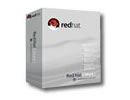'ZDNET Recommends': What exactly does it mean?
ZDNET's recommendations are based on many hours of testing, research, and comparison shopping. We gather data from the best available sources, including vendor and retailer listings as well as other relevant and independent reviews sites. And we pore over customer reviews to find out what matters to real people who already own and use the products and services we’re assessing.
When you click through from our site to a retailer and buy a product or service, we may earn affiliate commissions. This helps support our work, but does not affect what we cover or how, and it does not affect the price you pay. Neither ZDNET nor the author are compensated for these independent reviews. Indeed, we follow strict guidelines that ensure our editorial content is never influenced by advertisers.
ZDNET's editorial team writes on behalf of you, our reader. Our goal is to deliver the most accurate information and the most knowledgeable advice possible in order to help you make smarter buying decisions on tech gear and a wide array of products and services. Our editors thoroughly review and fact-check every article to ensure that our content meets the highest standards. If we have made an error or published misleading information, we will correct or clarify the article. If you see inaccuracies in our content, please report the mistake via this form.
Red Hat Linux 9 Professional


Red Hat Linux 9 Professional
pros and cons
- Clean and pretty Bluecurve interface includes a wealth of applications much-improved font display simplified installation.
- Weak multimedia applications and downloading tools expensive.
Only a few months after the release of Red Hat 8.0, the company has released a brand-new upgrade, Red Hat 9. We're not sure why Red Hat was in such a hurry, but the appearance of competitor Mandrake Linux 9.1 might have had something to do with it. Red Hat's latest version offers an improved interface and easier installation, but not many other major changes and no improvement in price. Like its predecessor, Red Hat Linux 9.0 Professional clocks in at a hefty £152, compared to £48 for Mandrake Linux 9.1 and £59.99 for SuSE Linux 8.2 Professional. Companies already committed to Red Hat should upgrade for its interface improvements, but anyone new to Linux should save a few pounds and try the lower-cost SuSE or Mandrake distributions instead. As always, if you're simply curious about Red Hat, you can download the free version, which gives you everything but technical support.
Setup & interface
Usability improvements dominate this upgrade. Red Hat 9 dramatically improves the OS's display of fonts, something that Mandrake Linux also does well in its recent 9.1 release. Mandrake's fonts still look sharper in the OpenOffice productivity suite, but Red Hat's look better in the Mozilla browser, which has always caused readability problems in Linux. Red Hat has also greatly simplified its installation -- even over the last version's. For example, Red Hat 9 now automatically creates partitions in free disk space and poses no danger to NTFS partitions (previous versions couldn't autopartition NTFS drives). Choosing the free-space option speeds the installation process significantly (a full installation takes about 40 minutes), especially when you install the OS from the included DVD, eliminating the need to swap CDs.
In terms of technology, version 9 combines a few new elements with an upgrade to existing ones. It runs on Linux kernel 2.4.20, with desktop environments KDE 3.1 and GNOME 2.2. Both the Web server, Apache 2.0, and the C library, GNU libc 3.23, are the most recent versions, as well. Experienced Linux users should note that Red Hat 9 implements the new Native POSIX Thread Library (NPTL), which replaces linuxthreads as the library for multithreaded programming. NPTL promises to make Linux more stable and consistent -- although technically, Linux kernel 2.6 is supposed to be the first kernel capable of fully supporting NPTL, so Red Hat may be jumping the gun in implementing it now. We didn't experience any stability problems as a result, however.
In version 8, Red Hat introduced its own, proprietary desktop interface, called Bluecurve, which incorporated elements of both the open-source KDE and GNOME desktop GUIs while establishing a look and feel different from both. The interface generated controversy in the Linux community, where adherence to existing, standard interfaces KDE and GNOME carry the day, but Red Hat persisted. Bluecurve shows even further improvement in version 9, with icons, toolbars and other interface elements (such as title bars) looking smoother and more appealing; its menus are more logically organised, as well. The result is a well-organised and attractive design.
Features
Red Hat 9 Professional comes with the same collection of applications found in competing Linux distributions: OpenOffice 1.0.2 is the default productivity suite (although KOffice 1.2 is bundled as well), and you also get Ximian Evolution, the increasingly popular Outlook-styled emailer. Beyond that, you'll find everything from strategy games to advanced server packages, plus development tools and every conceivable type of utility, bundled with the OS.
From the standpoint of the everyday user, Red Hat (and indeed, all Linux distributions) continues to lag behind Windows and Mac OS in three significant ways. First, the ability to view or play multimedia files -- particularly video files -- isn't built into the OS the way it is in Windows, and you'll find yourself downloading special utilities for this purpose.
That brings up the second problem: procedures for downloading and installing. Red Hat's packaging manager works well at connecting to the Red Hat site to determine what OS elements and packages have upgrades available, but when it comes to downloading a standalone file from the Internet, uncompressing it and working out how to perform the installation, Linux just isn't as easy as Windows. Granted, this is a problem with most Linux distributions, not just Red Hat, but at nearly the cost of the Windows operating system, we think Red Hat should be leading the charge to improve downloading.
The third problem lies with using multiple monitors: to get a two-monitor system to work in any Linux distribution, you need to find and edit, by hand, the XF86Config file, and this is anything but intuitive. We were hoping that Red Hat would address this problem.
Service & support
As with most commercial Linux distributions, you'll get better support for Red Hat if you pay for it than if you download the free version (actually, you'll get none with the free version). Red Hat backs its Personal version with 30 days of email and online support for installation but offers no phone support. You'll also get 30 days of free access to the Red Hat Network, which automatically updates à la Windows and a huge array of premium downloads. The Professional version gets you 60 days of unlimited phone support, email and online support, and access to the Red Hat Network.